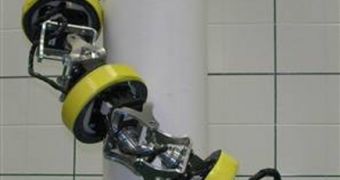These small inventions, which are relatively new to the market, have tremendous potential in fields ranging from the rugged construction sites to the delicate operating room. They can assist in virtually any kind of task that is otherwise too dangerous or risky for people to do, such as climbing to unstable heights on building poles, or diving down patient's throats to scan and offer feedback on what their insides look like, which considerably helps medics design the best approach to any given case.
Some of the most impressive snakebot prototypes feature climbing, swimming, and ground locomotion abilities, which make them extremely versatile in any type of weather or under any conditions. They can roll up and down on obstacles, and can, for instance, penetrate the tight confines of a collapsed building to look for survivors. They can be equipped with various measurement devices, as well as with video cameras and microphones for recording. They can be built to be as small as to fit inside a man's throat, or large enough to assist construction workers with carrying heavy loads across the facade of a building under construction. According to researchers from the Robotics & Mechanisms Laboratory (RoMeLa) at the Virginia Tech in Blacksburg, Va., led by director Dennis Hong, their newest prototype holds, for example, on poles or even square structures, via the use of the grasping force. This is similar to when humans hold bottles or soda cans. The robot swirls around the structure and makes contact with it on several points. Then, it contracts and remains attached to the target object. Internal engines make it easy for it to start vibrating in specific ways, which allows it to move upwards or downwards, according to necessities. “The cool thing is that you can coordinate that in a particular way, and the entire snake actually generates a rolling motion, twisting about its own axis, so that it actually rolls up the pole – but it’s not on wheels,” Hong says. “Let’s say you’re rolling up a pole and you come to a T-junction or an X-junction. Even if the pole diameter changes, or if it changes from circular to rectangular, you can get the snake to move over obstacles or take a branch if it’s a tree-like structure,” he concludes.
They are now able to perform some amazing tasks
hot right now

 14 DAY TRIAL //
14 DAY TRIAL //